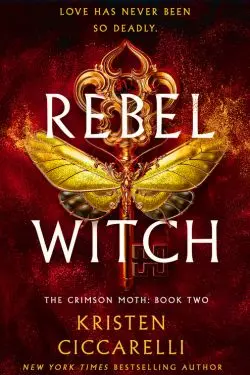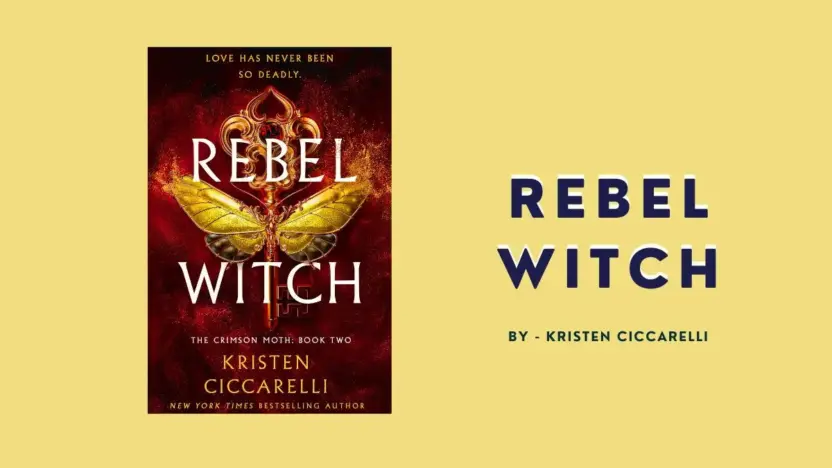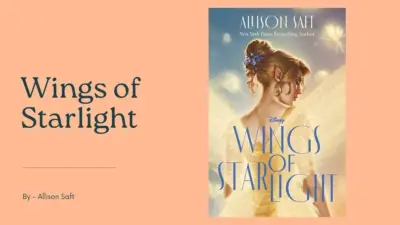Kristen Ciccarelli’s “Rebel Witch” serves as the riveting conclusion to the Crimson Moth duology, picking up the tumultuous tale of Rune Winters and Gideon Sharpe. This installment delves deeper into themes of love, betrayal, and the intricate dance between duty and desire, offering readers a compelling blend of fantasy and romance.
Plot Overview
Following the events of “Heartless Hunter,” Rune Winters finds herself on the run after being betrayed by Gideon Sharpe, the boy she once loved. To survive, she aligns with the formidable Cressida Roseblood, who seeks to reclaim the Republic and reinstate the Reign of Witches—a goal that hinges on Rune’s unique abilities. Meanwhile, Gideon grapples with his own turmoil, feeling deceived by Rune’s alliance with his greatest adversary. As political tensions escalate, Rune proposes a precarious partnership with Gideon. Together, they navigate a treacherous path, confronting lingering feelings and facing choices that could determine the fate of their world.

Character Development
The evolution of Rune and Gideon’s characters stands out prominently in “Rebel Witch.” Readers have lauded the depth and authenticity of their development. One reviewer noted, “I love the story, I love the character, and I love the emotion and heart in this duology.” This sentiment underscores the emotional resonance that Ciccarelli achieves, making the protagonists’ journeys both relatable and profound.
Rune’s transformation from a fugitive witch to a decisive force showcases her resilience and adaptability. Her internal struggles, especially concerning trust and loyalty, add layers to her persona. Gideon’s journey is equally compelling, as he confronts his ingrained beliefs and the stark realities of his world. Their intertwined paths highlight the complexities of love entangled with duty, making their relationship a focal point of the narrative.
Themes and Motifs
“Rebel Witch” intricately weaves themes of love, betrayal, and the quest for identity. The enemies-to-lovers trope is executed with finesse, capturing the tension and passion between Rune and Gideon. A reviewer expressed, “The tension. The chemistry. The fantastic banter!! The yearning!!! My word.” This dynamic not only propels the romantic arc but also enriches the broader narrative, exploring how personal relationships can influence larger societal conflicts.
The motif of power—both magical and political—is prevalent throughout the story. Characters grapple with the implications of their abilities and the responsibilities they entail. This exploration prompts readers to reflect on the moral ambiguities of power and the sacrifices it demands.
Pacing and Structure
The novel’s pacing has garnered mixed feedback. While many readers found the narrative gripping and hard to put down, others felt that certain segments, particularly in the latter half, were rushed. One reader observed, “The first half of this book was solid… But past the halfway point, this book became very rushed.” This disparity suggests that while the plot is engaging, a more balanced distribution of events might have enhanced the storytelling.
World-Building and Setting
Ciccarelli’s world-building continues to impress, expanding upon the foundations laid in the first installment. The political landscape, magical systems, and societal structures are depicted with vivid detail, immersing readers in a realm that feels both fantastical and tangible. The introduction of new locales and cultures adds depth, enriching the reader’s experience and understanding of the world’s complexities.
Supporting Characters
The ensemble of supporting characters plays a crucial role in shaping the protagonists’ journeys. Cressida Roseblood emerges as a formidable antagonist, her ambitions and methods adding tension to the plot. Her interactions with Rune and Gideon challenge their perceptions and force them to confront uncomfortable truths. Other characters, both allies and adversaries, contribute to the narrative’s richness, each bringing their own motivations and histories into play.
Reception and Critique
“Rebel Witch” has been met with predominantly positive reviews, with readers praising its character development and emotional depth. However, some critiques have been directed at the pacing and the introduction of new elements in the latter part of the book. A reviewer mentioned, “New characters introduced that we are supposed to care for but get to spend no time with.” This feedback highlights the challenge of balancing character focus with plot progression in a concluding installment.
Conclusion
In “Rebel Witch,” Kristen Ciccarelli delivers a compelling conclusion to the Crimson Moth duology, blending romance, fantasy, and political intrigue. The nuanced portrayal of complex characters, combined with a richly imagined world, ensures that readers are both entertained and emotionally invested.
Also Read: Wings of Starlight: By Allison Saft (Book Review)



